The rustic style is undoubtedly one of the most timeless and universal in the world of interior design. Its essence is based on the connection with nature, the use of noble materials, and the pursuit of warm and welcoming spaces that convey calm and authenticity.
Although its origin is linked to country houses and rural environments, today the rustic style has been reinterpreted in a contemporary way, adapting to both urban homes and high-end interior design projects. For architects and interior designers, working with this style means mastering the balance between tradition and modernity, between craftsmanship and functionality.
Origin and influence of the rustic style
The rustic style has its roots in vernacular architecture, in those constructions built with materials available in the immediate surroundings: stone, wood, clay, natural fibers. Its essence lies in simplicity, functionality, and the ability to withstand the passage of time.
For centuries, this style was the direct representation of rural life. However, over time, it has become a highly valued resource in interior design because it provides something that other styles can hardly achieve: a sense of home.
Today, rustic does not necessarily mean “old” or “outdated.” Its evolution has led it to coexist with modern design, integrating contemporary elements such as glass, steel, or ambient lighting, without losing its natural essence.
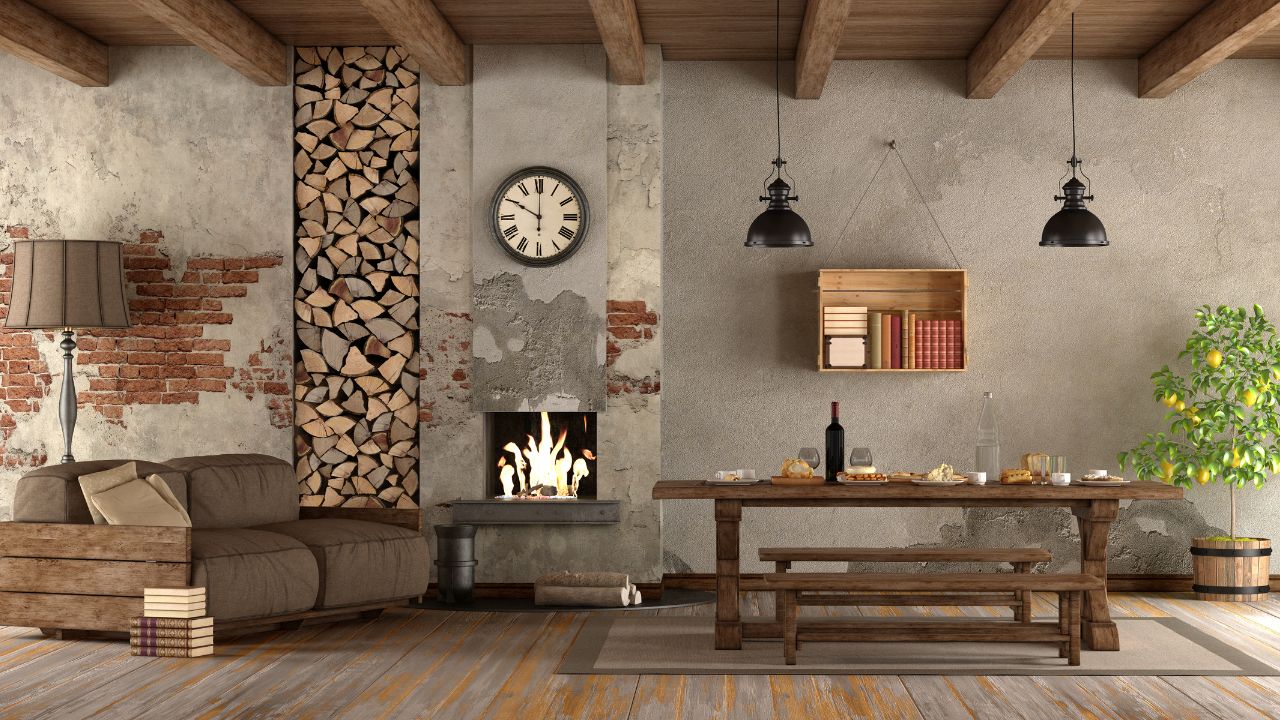
Key principles of the rustic style
For a space to truly embody this style, it is necessary to respect a series of principles that define its character:
Authenticity: materials must be shown as they are, with their grains, textures, and imperfections.
- Warmth: spaces should invite relaxation and togetherness.
- Connection with nature: the outdoors enters the indoors through materials, views, and natural light.
- Functional simplicity: nothing is superfluous, nothing is overloaded. Furniture and objects are chosen for their usefulness and emotional value.
These principles make the rustic style a safe choice for those who want to create spaces where comfort and emotional well-being prevail.
Essential materials in rustic projects
Materials are, without a doubt, the cornerstone of the rustic style. It’s not just about coverings or finishes, but about the very expression of the space. Each material connects directly with nature and conveys a sense of authenticity that is impossible to imitate with synthetic or overly processed versions. In rustic interior design, the choice of materials is not an aesthetic detail: it is a statement of intent.
Natural stone
Natural stone is one of the most characteristic and powerful elements of the rustic style. It is used in structural walls, fireplaces, floors, or even as skirting both indoors and outdoors. Its strength lies in the way it conveys robustness and permanence.
- In a living room, an exposed stone wall can become the focal point, enhanced by warm lighting that highlights its irregular textures.
- In kitchens and bathrooms, stone brings freshness, especially in warm climates, while in colder areas it acts as thermal mass that helps retain heat.
- There are many variations: from light limestone, more Mediterranean, to dark slate, ideal for mountain projects.
Stone is not covered up: its imperfections, veins, and tonal variations are what make it special and genuine.
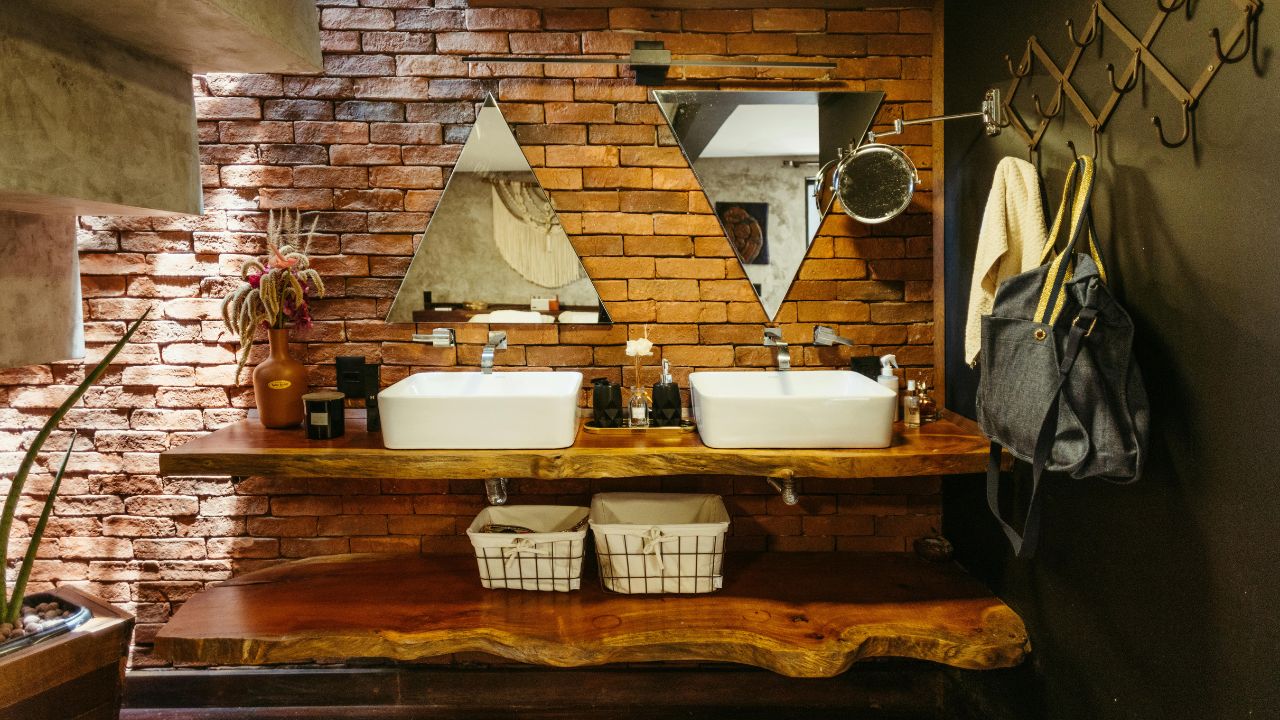
Solid wood
If stone represents solidity, wood is the warm soul of the rustic style. It is the most versatile and omnipresent material: it appears in exposed beams, floors, doors, windows, staircases, and, of course, furniture.
Solid wood retains its natural character. Knots, cracks, and tone variations are not hidden but celebrated as marks of authenticity.
- Exposed beams: one of the most iconic features. They add character and visual structure to the space.
- Aged wooden floors: they convey comfort underfoot and gain personality over time.
- Robust furniture: oak dining tables, chestnut sideboards, or reclaimed pine chairs.
The finish is usually matte, waxed, or slightly distressed, never glossy. The goal is to keep the wood as close as possible to its natural state.
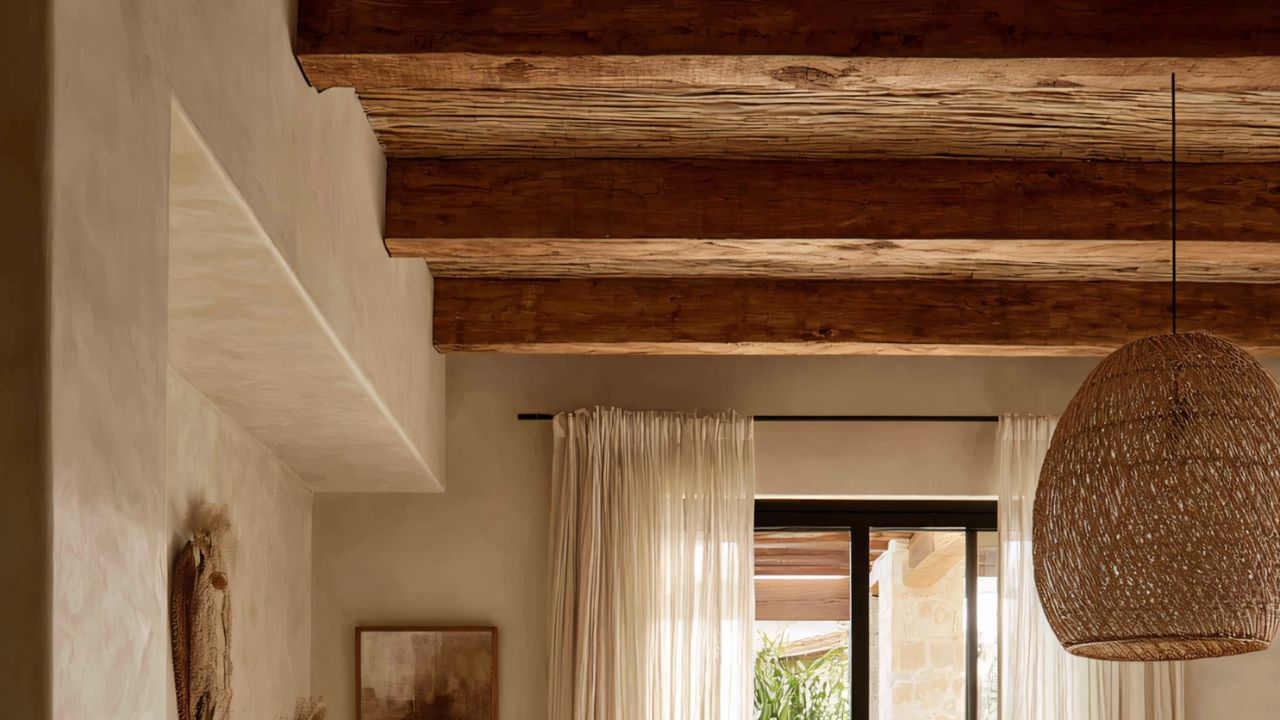
Plaster and lime
Whitewashed walls in white or soft tones are a distinctive hallmark of the rustic style. They bring freshness, brightness, and a finish that, although simple, transforms spaces.
- Plaster and lime make it possible to create smooth, slightly irregular surfaces that reflect light naturally.
- In Mediterranean homes, these walls help keep interiors cool, while in inland areas they reinforce the feeling of spaciousness.
- They can be combined with wooden ceilings or stone walls, balancing textures and adding brightness to the whole.
Lime is also a natural material with antibacterial and humidity-regulating properties, which strengthens its value beyond aesthetics.
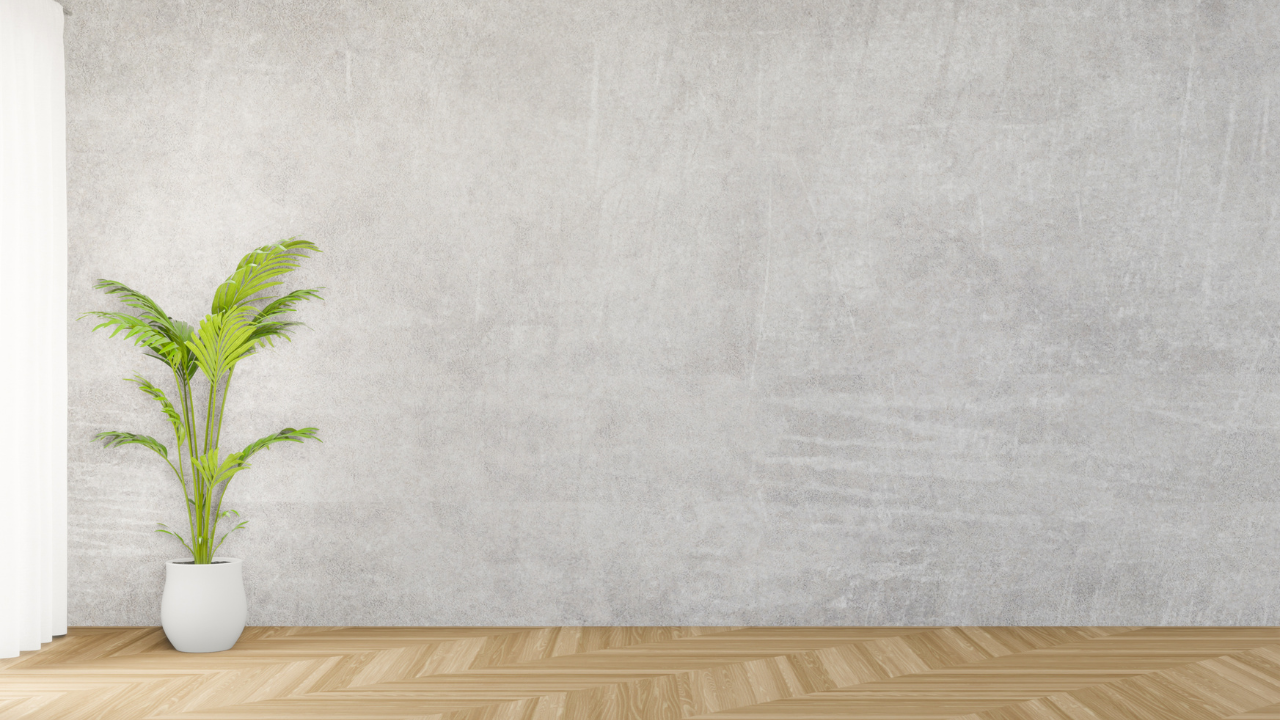
Plant fibers
Natural fibers are another pillar of the rustic style, as they bring lightness and freshness in contrast to the solidity of stone and wood. Esparto grass, rattan, wicker, or jute are materials worked in traditional crafts that today find new applications in contemporary interior design.
- Jute rugs: they add texture and define areas in living rooms or bedrooms.
- Wicker chairs and armchairs: lightweight and comfortable, they add an artisanal touch.
- Hanging fiber lamps: they create a warm, diffuse light that enhances the cozy atmosphere.
These pieces, in addition to being aesthetic, are sustainable and easily integrated into environmentally responsible design projects.
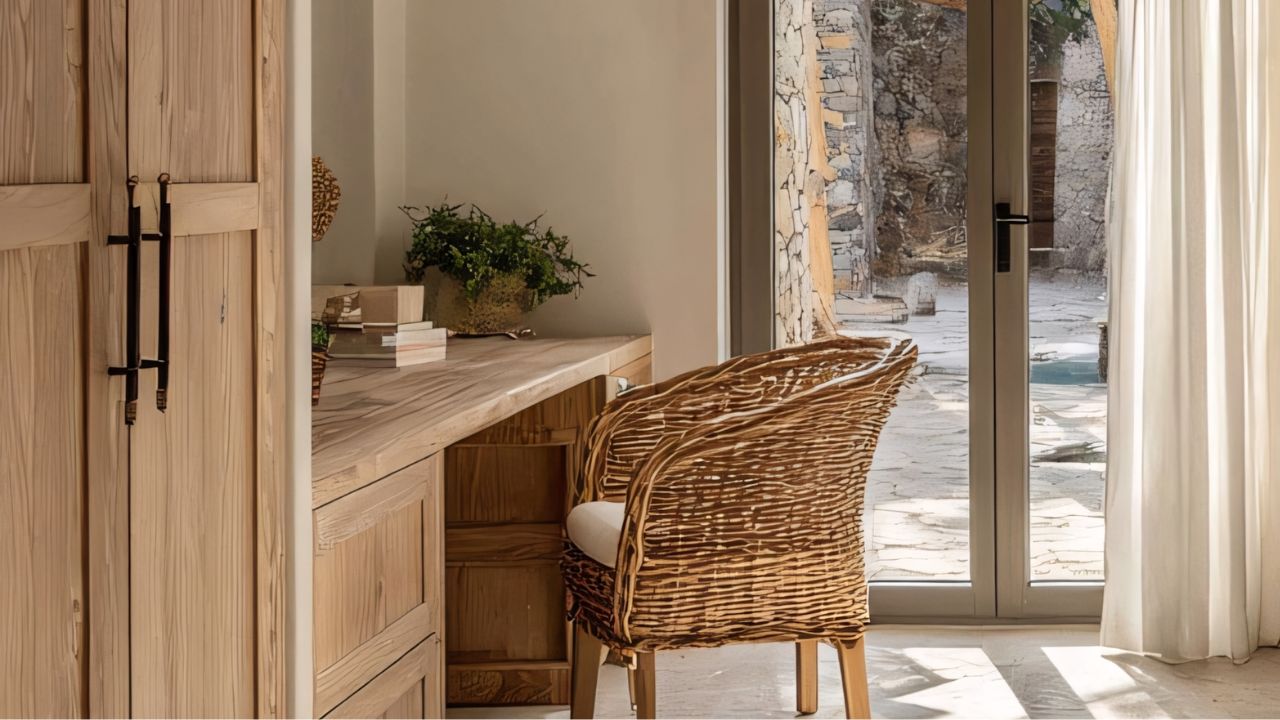
Wrought iron
Wrought iron adds artisanal character and robustness to the rustic style. It appears in railings, handles, lamps, beds, or door and window fittings.
- In lighting, iron lamps evoke tradition and durability.
- In joinery and hardware, they bring a robust air that contrasts with the warmth of wood.
- In details such as headboards or side tables, they reinforce the timeless and handcrafted spirit.
Its finish is usually matte, black, or aged, avoiding modern gloss to maintain aesthetic coherence.
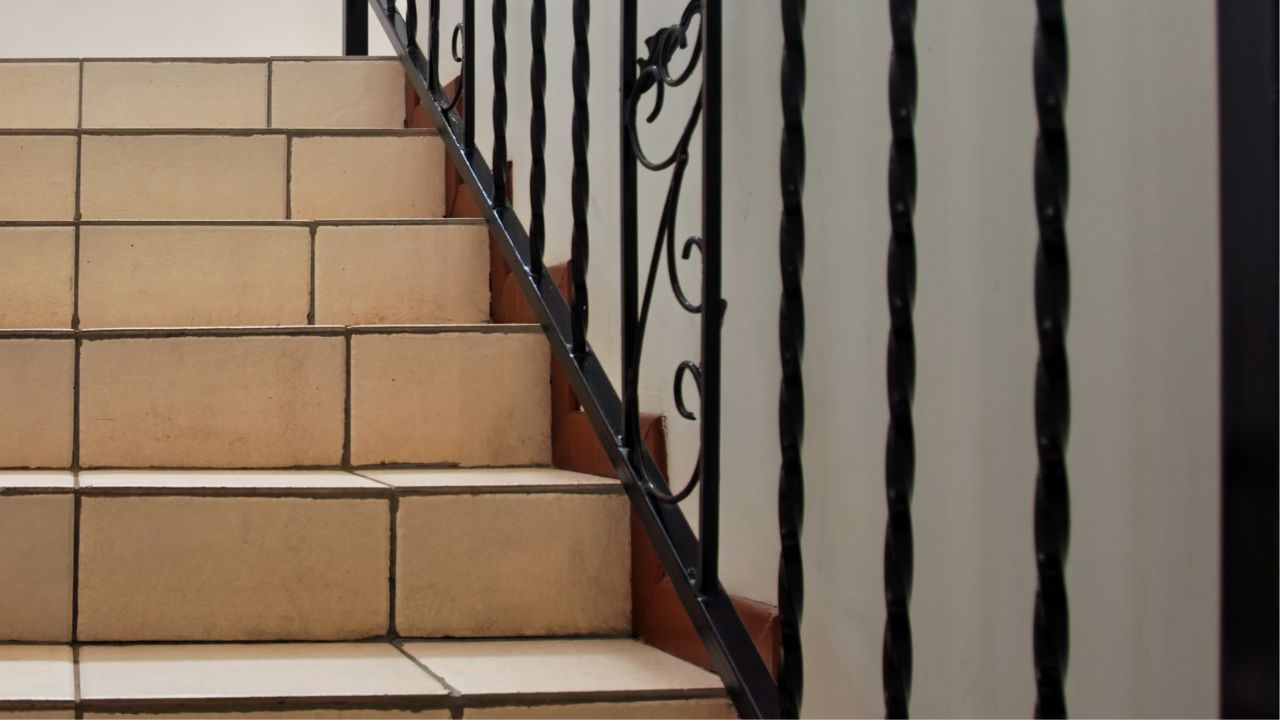
Integration of materials
In the rustic style, materials do not work as mere coverings or decorations: they are structural, functional, and protagonists. The key lies in how they are combined to achieve balance: the hardness of stone is softened by the warmth of wood; the lightness of plant fibers balances the solidity of iron.
Each material contributes its part in an aesthetic dialogue that creates coherent, cozy, and deeply human spaces.
Colors and color palette
The rustic style is characterized by a natural and earthy palette. The predominant tones are browns, ochres, beiges, off-whites, and soft grays.
These are colors that evoke earth, wood, and stone, generating harmonious and relaxing environments. Accents can come from details in olive green, muted blue, or warm tones such as terracotta, always in soft ranges and without stridency.
Furniture in rustic style
The furniture is robust, functional, and durable. The pieces are usually made of solid wood, with natural or slightly aged finishes. Long, sturdy dining tables, oak sideboards, rush chairs, or bench seating are part of its identity.
In its more contemporary version, rustic furniture can be combined with modern pieces to create contrast: a reclaimed wood table next to minimalist design chairs, for example. This type of mix adds sophistication without losing authenticity.
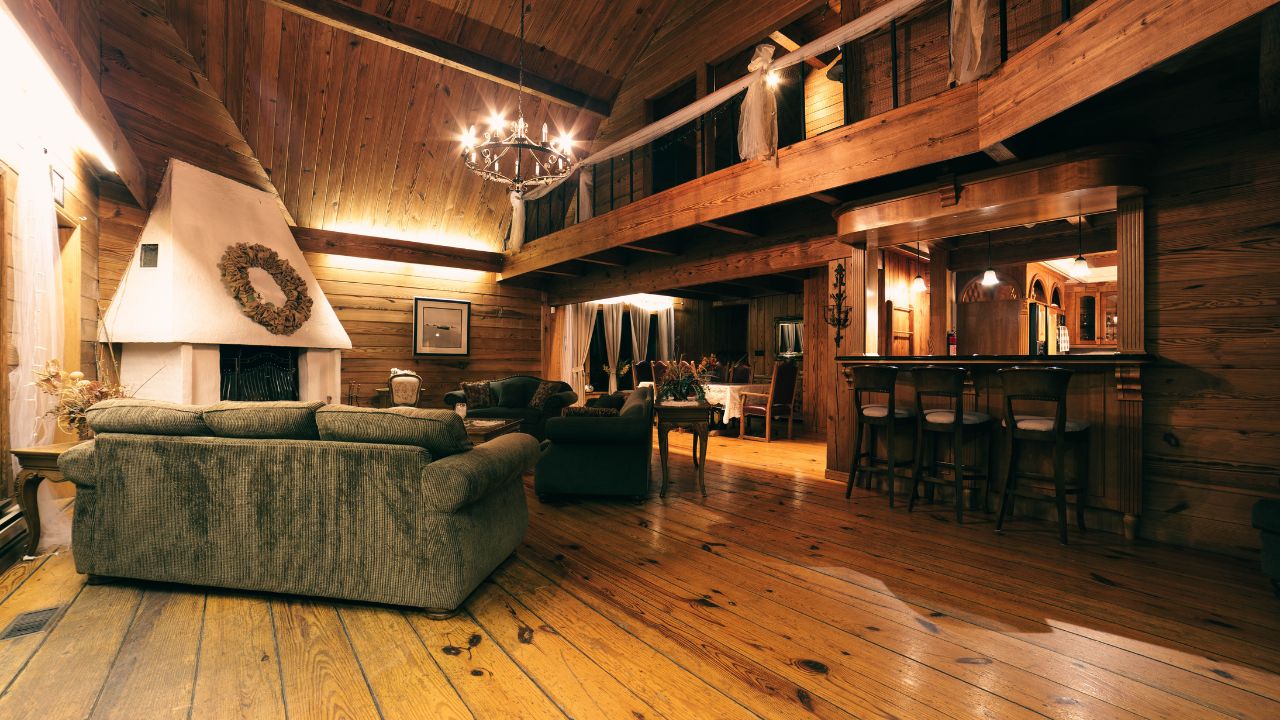
Lighting in rustic style
Lighting should enhance the warmth of the space. The goal is soft, warm light sources distributed at different levels.
- Wrought iron or wooden lamps with fabric shades.
- Indirect light through sconces that soften whitewashed walls.
- Candles and candelabras as a nod to tradition.
- Large windows that let in natural light and connect with the outdoors.
Light in the rustic style does not seek spectacle but a cozy atmosphere.
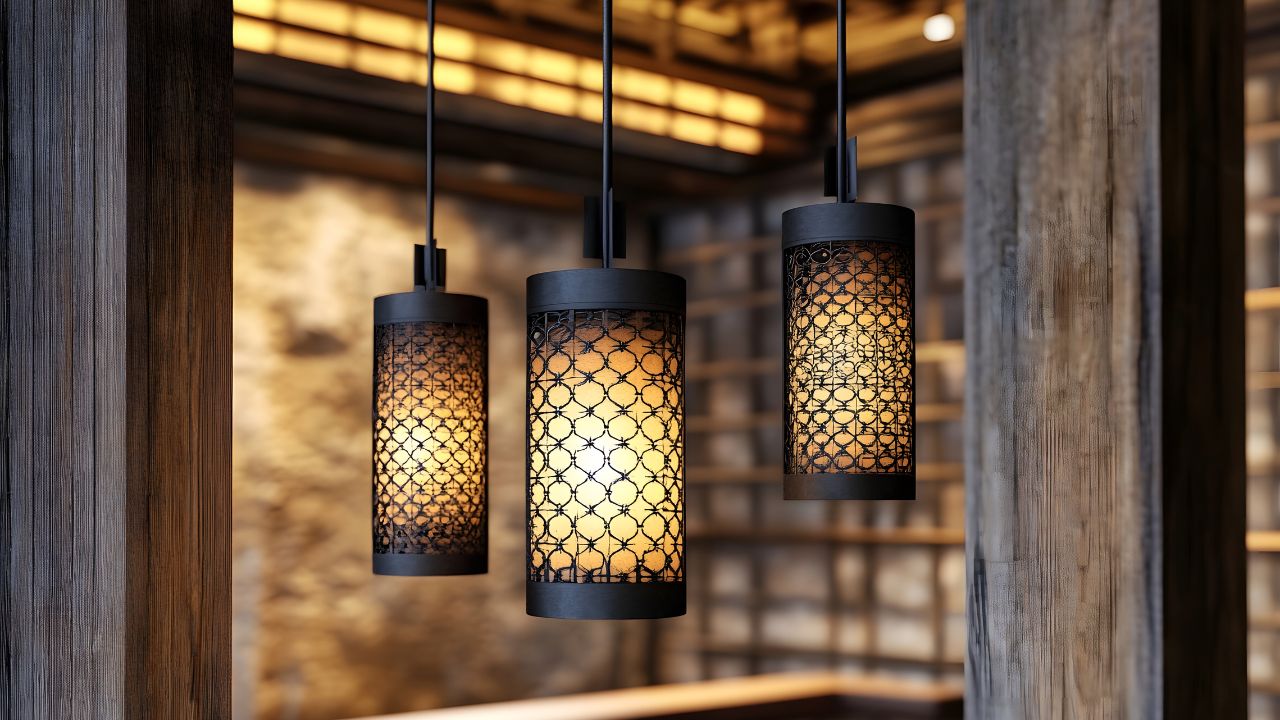
Distribution and application in projects
The rustic style adapts to both rural houses and urban homes that seek to convey naturalness. Some keys to applying it in projects:
- Open floor plans: although traditionally clear divisions were used, in modern versions the tendency is to integrate kitchen, dining, and living areas to encourage togetherness.
- Fireplaces: they are the heart of many rustic spaces, acting as focal points.
- Bedrooms: designed as refuges, with linen bedding, wooden headboards, and natural fiber rugs.
- Bathrooms: stone and handcrafted ceramics create relaxing spaces with an almost Mediterranean feel.
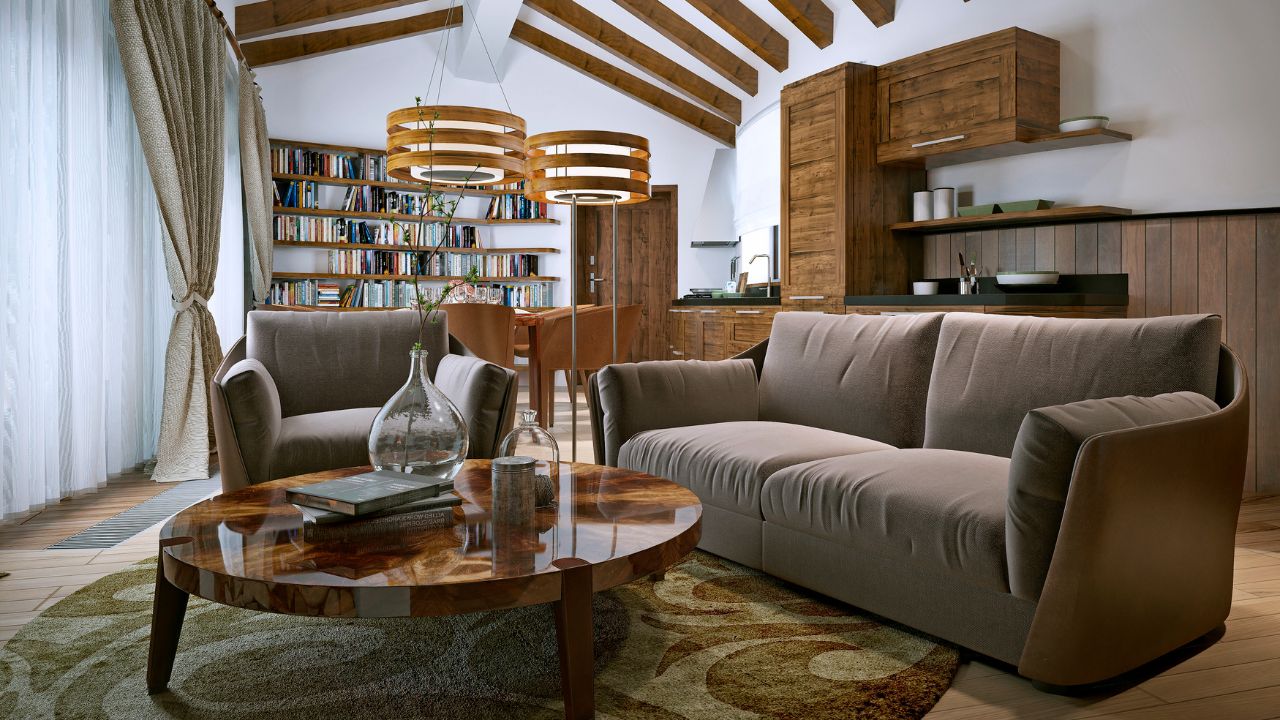
Contemporary rustic style
In recent years, the rustic style has evolved into more refined versions, where it is combined with minimalist and modern elements. This approach seeks to maintain the natural essence but adapt it to urban living.
Thus, we find projects where a kitchen with wooden beams is combined with state-of-the-art appliances, or a living room with stone walls is illuminated by contemporary design lamps.
The result is an updated rustic style: warm, authentic, and functional, yet with the elegance demanded by today’s projects.
Our professional opinion
The rustic style in interior design is a trend that never goes out of fashion. Its ability to generate comfort, authenticity, and connection with nature makes it a valuable resource for architects and interior designers.
For professionals, this style represents the opportunity to work with noble materials, revive traditional techniques, and at the same time integrate modern solutions that make spaces more functional.
With the help of digital tools like Teowin Live, it is possible to design and present rustic projects with a high level of detail: from material selection to realistic renders showing how stone, wood, and natural fibers will integrate into a warm and sophisticated environment.
Ultimately, the rustic style is not just an aesthetic language but a way of creating soulful spaces, where everyday life is enjoyed calmly and in contact with what is essential.
